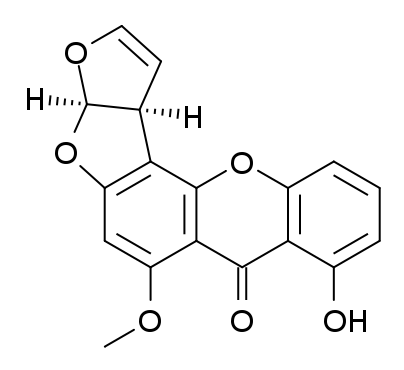ToxicBlackMould
Information about mould and mould disease
Sterigmatocystin

Sterigmatocystin is structurally related to aflatoxins, was originally isolated as a metabolite of Aspergillus. versicolor. It was later found to be produced by other species of Aspergillus, including A. flavus (as a precursor of aflatoxin B1), A. flavipes, A. nidulans, A. sydowi, A. rugulosus and A. ustus.
Sterigmatocystin is also produced by species belonging to other fungal genera, including Chaetomium, Bipolaris and Emericella. Sterigmatocystin-producing aspergilli, such as A. flavus, A. ustus and A. versicolor have been found in wine grapes and A. versicolor was found to be the source of sterigmatocystin in infected pistachio nuts.
Sterigmatocystin (C18H12O6) exhibits weak acute toxicity?, mutagenicity?, cytotoxicity? and carcinogenicity?. However, its low solubility in water or gastric juices limits its potential to cause human illness. Sterigmatocystin is a potent liver carcinogen similar to aflatoxin B1.
The toxic effects of sterigmatocystin are much the same as those of aflatoxin B1. Chronic symptoms in test animals include induction of hepatomas ,pulmonary tumours, renal lesions and alterations in the liver and kidneys. Cattle exhibiting bloody diarrhoea, loss of milk production and in some cases death were found to have ingested feed containing Aspergillus versicolor and high levels of sterigmatocystin of about 8 mg/kg.
The IARC-classification of sterigmatocystin is group 2B, which means it is carcinogenic in other species and is possibly carcinogenic to humans, but that a definitive link between human exposure and cancer has not been proven.
